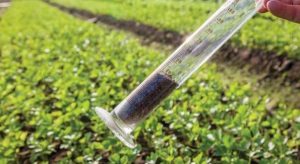Unlocking the bank on input prices
- By: "Farm Tender" News
- Agribusiness News
- Oct 25, 2021
- 1127 views
- Share

By ORM
At the start of 2021, urea was around $400/t and MAP was around $800/t. Since then, prices have risen to levels around $800/t and $1,000/t respectively. Fertiliser costs historically make up 12-15% of average gross farm income. ORM modelling shows that if fertiliser prices remain at current levels throughout 2022, with no change to the rate of fertiliser applied, then fertilizer cost increases to 20% of average gross farm income. If all else remains the same, this increase in fertilizer price will result in a 70% reduction in farm profit.
 |
This is not the first-time growers have experienced such a price increase. During 2008, when prices last increased over $1000/t for phosphate fertilisers, many growers responded by reducing the rate of phosphate fertiliser applied, to match their budget. Concerned about the effect on farm profitability, consultants and farming groups also started looking for tools and farming practices that could lead to improved efficiency of fertiliser application. |
The fertiliser “bank”
It was estimated by CSIRO in 1997 that each hectare of soil in our broadacre cropping zones contained up to 400kg of phosphorus, or roughly equivalent to 1600 kg of MAP. The high levels of phosphorus in the soil are the result of the addition of phosphate fertiliser nearly every year for the past 100 years. Initially, when farmers began growing crops, the native soils were extremely low in natural phosphorus, very often less than 10kg/ha. When farmers started growing crops through the late 1800’s, yields were over 1 t/ha, however as the phosphorus depleted in the soil, the yields dropped to less than 500kg/ha at the turn of the century. With the advent of easily accessible fertiliser, and other improved farming techniques, yields have improved 4-10 times this level (2-5t/ha).
| Although there are improved fertiliser products now, the efficiency of fertiliser is still only around 20%, i.e., if a grower applies 50kg/ha of MAP or around 10 units of P, then only 2 units of P from the applied fertiliser is used in the current production year. The other 8 units of P are ‘locked up’ in the soil in various forms, with up to half being locked-up in tightly held chemical bonds long-term in the soil, hence the increase from 10 to 400 kg/ha of P. With levels increasing with every year that phosphorus is applied, the question should be asked, ‘Is there a way of unlocking this soil P bank?’. | 
|
Unlocking the bank; Science, or snake oil?
Some proponents will tell you there are products capable of increasing the efficiency of fertiliser and ‘unlocking’ this ‘P bank’. Many of these marketed products have not been field tested widely enough to show economic benefits, but the story is certainly compelling enough to warrant further investigation.
 |
The industry gold standard for field testing products is replicated, randomised, statistically analysed trials using a standard protocol with known controls. Many products fit the category of the ‘silver standard’ i.e., grower paddock comparisons, with the ‘bronze standard’ being laboratory pot trials. |
There are a few fertiliser efficiency products (phosphate solubilising fungal products) available in Australia that can claim to meet the ‘gold standard’ of testing; one was discovered by CSIRO and the other by Agriculture Canada. These products have been widely field tested in wheat, canola and legume crops in Australia using industry best practice field testing procedures. Claims are of yield improvements in the vicinity of 5%, cost of around $20/ha and the reduction in fertiliser P applied of up to 50%.
| Even though these products have been field tested by companies, it is still advisable that growers also field test these products to confirm the results before widely adopting them. Growers should be wary of using products that do not undergo ‘gold standard’ testing as these products could potentially add cost without contributing to income, and if phosphate fertiliser rates are reduced using these silver and bronze standard products, then yields could fall over a period of 4-6 years.
|
 |
Combined small changes in farming practice can offset the increased fertiliser prices
 |
If growers combine several small changes (the ‘one percenters’) into their farming practices such as soil testing, variable rate application, utilising ‘gold standard’ fertiliser efficiency tools and better performing seed varieties, much of the higher price of fertilisers could be off-set. And even if fertiliser prices fall from current levels, changes made in response to the high prices will make your business more profitable in the long-term and far more resilient to future shocks. |










Share Ag News Via